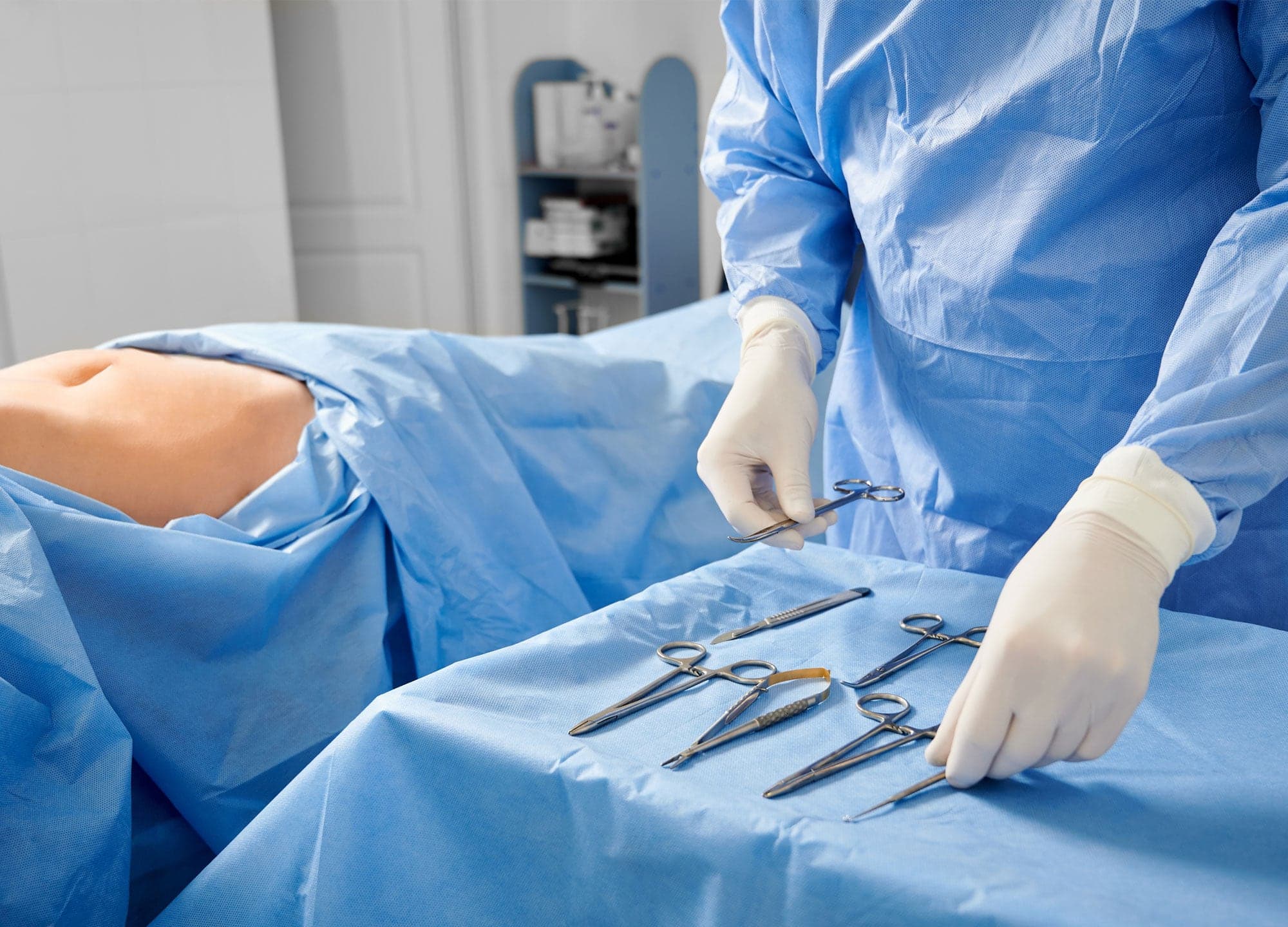If this is the first time you’re even hearing the term reverse tummy tuck, there’s a good reason. According to plastic surgeons, the surgery is extremely rare, particularly when compared to its traditional counterpart, because there are very few people who are good candidates. “If you talk to most plastic surgeons, they’ll tell you that maybe one out of every 100 tummy tucks they do is a reverse,” says Dr. Payman Danielpour, a board-certified plastic surgeon in Beverly Hills, California. “I’ve been in private practice for 15 years and done five of them.” Here’s what you need to know about this unicorn procedure.
What is a reverse tummy tuck?
Exactly what it sounds like. Whereas a traditional tummy tuck involves removing loose skin on the lower abdomen, a reverse tummy tuck focuses on the upper abdomen. You’re working in the opposite direction, hence the name, explains Dr. Ruth Celestin, a board-certified plastic surgeon in Riverdale, Georgia. As a rule of thumb, the belly button is the dividing line. Patients who have excess skin below it are candidates for a tummy tuck; those who have excess skin above it and/or under the breast area are candidates for a reverse, she says.
Who is the ideal candidate for a reverse tummy tuck?
“A good candidate should have a tight lower abdomen and have loose skin only above the navel. The majority of patients also have loose skin below it, meaning a reverse tummy tuck isn’t a sufficient treatment option,” says Dr. Michael Horn, a board-certified plastic surgeon in Chicago. And while it is uncommon for skin laxity to be confined solely to the upper part of the stomach, it does happen, adds Dr. Celestin. She sees it most commonly in patients who have undergone massive weight loss. Occasionally, their lower abdomen will be fine and only the upper abdomen will be affected, she explains. (Credit genetics, which dictates where you store your fat and where the skin ends up stretching the most.)
Dr. Danielpour adds that it can also happen in women post-pregnancy. While it’s more often the skin on the lower abdomen that is loose, there are women who experience skin laxity only in the upper part of their stomach. And as is the case with a traditional tummy tuck, there’s no nonsurgical way to remove this excess skin.
What is the reverse tummy tuck scar like?
Unfortunately, the scar is very noticeable. Traditional abdominoplasty incisions are made very low, so they’re easily hidden by underwear or a bathing suit. The incisions for a reverse tummy tuck are made underneath the breast. While they’re generally hidden in the breast fold, they do extend all the way to the sternum, so “the scar is going to be visible when you’re in a [two-piece] bathing suit, and very few patients want that,” says Dr. Danielpour.
That being said, the placement of the incision does offer an advantage for those who also have loose or sagging skin on the breasts, notes Dr. Celestin. “We can actually use the excess skin removed from the reverse tummy tuck to augment the breasts. We essentially swing it back up into the breast through that same incision, to add fullness,” she explains. Again, this is beneficial for weight-loss patients who likely will have uniformly lost volume in their breasts as well, she points out.
Can a reverse tummy tuck repair diastasis recti?
Not fully. Particularly in post-pregnancy patients, tummy tucks offer the advantage of repairing separated abdominal muscles, a condition known as diastasis recti. “A reverse tummy tuck can address a partial diastasis recti in the upper abdomen, but someone who needs complete rectus muscle repair is a candidate for a traditional abdominoplasty,” says Dr. Horn.
What if you have loose skin on the upper and lower abdomen?
If someone has excess skin across their entire abdomen, that doesn’t necessarily mean that they need both a traditional and reverse tummy tuck. First and foremost, “We’d never perform these two surgeries at the same time. It would be dangerous to cut both the top and the bottom of the abdomen, as you’re greatly impacting the blood supply to the skin,” says Dr. Celelstin. She says a traditional abdominoplasty would be performed first. “Even in weight-loss patients, the largest amount of excess skin tends to be on the lower part of the stomach, and you want to do the heavy lifting first. Even with a regular tummy tuck, you can still get a lot of correction and change that’s visible even in the upper part of the abdomen. So much so that the patient might end up not even needing a reverse tummy tuck,” she explains. If, six months to a year later, there is still laxity on the upper part of the stomach, that’s when a reverse tummy tuck might be helpful, she says.
What is reverse tummy tuck recovery like?
While recovering from a reverse tummy tuck may be slightly easier—credit the fact that there’s no full muscle repair involved—the timeline is fairly similar, says Dr. Danielpour. That means you’ll need to take about 10 days off from work, wear compression garments for six weeks, and wait six to eight weeks before resuming normal exercise and physical activity. It does bear mentioning, however, that reverse tummy tucks do tend to come with a higher price tag. “Because it’s a much less common type of surgery, the doctors who are doing it and are familiar with it are charging a premium,” notes Dr. Celestin.











